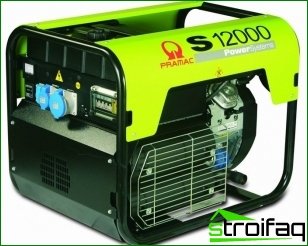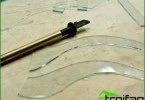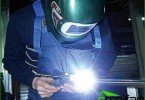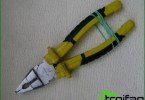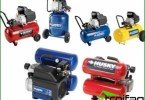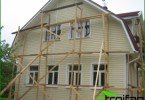The technical structure that produces electricity by electromagnetic induction and converts mechanical energy into electrical energy is called a generator or alternator. Such a machine by the method of generating energy can be – direct or alternating current.
Initially and for quite a long time, direct current generators remained monopolists among alternative sources of electricity. But unlike alternators, rapid wear of equipment occurs. This is due to the presence of a collector – an electromechanical element that performs a rectifying function that transforms alternating current into constant. In this process, both the straightener and the brushes wear out. The higher the rotational speed of the armature of the device itself, the stronger the damage. Sometimes limit switches are used to increase generator life
Two types of DC generators have been developed according to the specifics of excitation:
• Electromagnetic excitation.
• Magnetoelectric excitation.
In the first case, the winding system is placed at the main poles. The winding is connected to an autonomous power supply..
In the second type, the excitation is carried out by means of permanent magnets. Equipment poles are constructed from these magnets..
DC alternators put into operation factories, large enterprises. For example, in such industries in which production involves continuous consumption of electricity. it – metallurgy, electrolysis, land, air, water transport, etc. Also machines – constant current producers are used by power plants. Here they are necessary as the main causative agents of other generators, current transformers, operating simultaneously. A DC generator is capable of reaching a power of about ten megawatts.
The structure of the alternator is more complicated, but the service life is longer and the quality is level. So induction generators exist of several types and are capable of generating considerable currents, taking into account the high voltage.
The composition of such a generator includes:
• electromagnets forming a magnetic field.
The technical structure that produces electricity by electromagnetic induction and converts mechanical energy into electrical energy is called a generator or alternator. Such a machine by the method of generating energy can be – direct or alternating current.
Initially and for quite a long time, direct current generators remained monopolists among alternative sources of electricity. But unlike alternators, rapid wear of equipment occurs. This is due to the presence of a collector – an electromechanical element that performs a rectifying function that transforms alternating current into constant. In this process, both the straightener and the brushes wear out. The higher the rotational speed of the armature of the device itself, the stronger the damage. Sometimes limit switches are used to increase generator life
Two types of DC generators have been developed according to the specifics of excitation:
• Electromagnetic excitation.
• Magnetoelectric excitation.
In the first case, the winding system is placed at the main poles. The winding is connected to an autonomous power supply..
In the second type, the excitation is carried out by means of permanent magnets. Equipment poles are constructed from these magnets..
DC alternators put into operation factories, large enterprises. For example, in such industries in which production involves continuous consumption of electricity. it – metallurgy, electrolysis, land, air, water transport, etc. Also machines – constant current producers are used by power plants. Here they are necessary as the main causative agents of other generators, current transformers, operating simultaneously. A DC generator is capable of reaching a power of about ten megawatts.
The structure of the alternator is more complicated, but the service life is longer and the quality is level. So induction generators exist of several types and are capable of generating considerable currents, taking into account the high voltage.
The composition of such a generator includes:
• electromagnets forming a magnetic field.
• Windings. Inducing unstable electromotive force. The magnitude of the fluctuation of the EMF of induction is almost equal in the ratio of the number of turns in the winding. It is also equal to the magnitude of the volatile magnetic movement at each revolution.
So that a greater amount of magnetic flux is produced, respectively, at the output and electricity, a special system of magnets is used in the generating machine.
There are 2 steel cores. Windings that create a magnetic field. One core rotating is a rotor. A static core is a stator. The smaller the distance between both cores, the greater the magnitude of the inductive flux. Along with scientific and technological progress, the machine generating electricity is also being improved. And perhaps more people will be able to afford a home alternator.
